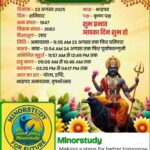5 Inspiring Facts About the National Song of India That Will Motivate You
India, a land of rich history and cultural diversity, celebrates its heritage through symbols, songs, and traditions. Among these, the National Song of India – “Vande Mataram” – holds a special place. Unlike the National Anthem, which is played at official events, the National Song is deeply intertwined with India’s struggle for freedom and evokes a strong sense of patriotism and devotion. In this article, we explore the history, facts, timeline, significance, FAQs, societal impact, and daily life relevance of the National Song of India.
- 5 Inspiring Facts About the National Song of India That Will Motivate You
- History of the National Song of India
- Lyrics and Meaning
- Interesting Facts About the National Song
- Timeline of Key Events Related to the National Song
- Significance of the National Song
- FAQs About the National Song of India
- Impact on Daily Life
- Observance and Wishing
- Conclusion: Why the National Song Matters
History of the National Song of India
“Vande Mataram” was originally a poem written by Bankim Chandra Chatterjee in the 1870s as part of his novel Anandamath. It became a source of inspiration during India’s freedom struggle and was later declared the National Song of India:
Literary Origin: Written in Sanskrit and Bengali, the song praised the motherland as a divine entity, symbolizing love, devotion, and sacrifice.
Role in Freedom Movement: During the Indian independence movement, freedom fighters and revolutionaries sang “Vande Mataram” to instill courage and unity.
Official Recognition: After independence, the song was recognized by the Government of India as the National Song, distinct from the National Anthem (“Jana Gana Mana”), reflecting India’s historical and emotional heritage.
The song continues to be performed at schools, cultural programs, and national events, symbolizing devotion to the motherland.
Lyrics and Meaning
The first two verses of “Vande Mataram” are officially recognized as the National Song. Its meaning is devotional, patriotic, and motivational:
The song describes India as a divine mother, praising her beauty, bounty, and glory.
It calls upon citizens to serve the nation with dedication, love, and courage.
The song’s poetic language has inspired countless generations to value freedom, unity, and national pride.
Interesting Facts About the National Song
Composer: Written by Bankim Chandra Chatterjee, a revered figure in Bengali literature.
First Sung Publicly: The song was first sung at a public meeting in 1896 during the anti-colonial movement.
Language: Originally composed in Sanskrit and Bengali, the song’s lyrics have been translated into multiple languages.
Patriotic Symbol: It became a call to action against British colonial rule, motivating freedom fighters across India.
Cultural Influence: Appears in films, art, literature, and public events, symbolizing devotion and unity.
Timeline of Key Events Related to the National Song
1870s: Bankim Chandra Chatterjee writes the poem “Vande Mataram” in Anandamath.
1896: Song is sung publicly at freedom movement gatherings, inspiring revolutionaries.
1905: Used widely during the Swadeshi movement against British rule.
1947: Recognized as the National Song of India after independence.
1950s: Introduced in schools and government events to educate citizens.
2000s–2020s: Continues to inspire patriotism, unity, and cultural pride across India.
Significance of the National Song
The National Song carries emotional, cultural, and moral significance:
Patriotic Inspiration: Motivates citizens to love and serve their country.
Cultural Heritage: Preserves India’s historical struggle for freedom and literary heritage.
Spiritual Devotion: Symbolizes motherland as a divine entity, fostering reverence and respect.
Educational Value: Taught in schools to instill national pride and moral values in children.
Social Unity: Brings together people of diverse backgrounds, reflecting India’s unity in diversity.
FAQs About the National Song of India
Q1: Who wrote the National Song of India?
A1: The song “Vande Mataram” was written by Bankim Chandra Chatterjee in the 1870s.
Q2: When was it recognized as the National Song?
A2: It was officially recognized as the National Song of India after independence in 1947.
Q3: How is it different from the National Anthem?
A3: The National Anthem, “Jana Gana Mana,” is played during official functions, while “Vande Mataram” is sung to evoke patriotism and devotion, especially in schools and cultural programs.
Q4: What language is the National Song in?
A4: Originally in Sanskrit and Bengali, it has been translated into many Indian languages.
Q5: Where is it commonly performed?
A5: It is sung at schools, independence day and republic day programs, cultural events, and patriotic gatherings.
Impact on Daily Life
The National Song influences daily life and society in multiple ways:
Education: Students learn the song in schools, instilling moral values and patriotism.
Cultural Programs: Sung during festivals, patriotic events, and competitions, fostering national unity.
Historical Awareness: Teaches citizens about India’s freedom struggle and sacrifices.
Social Cohesion: Brings together people from different states, languages, and religions, promoting harmony.
Personal Inspiration: Encourages individuals to serve the nation selflessly and courageously.
Observance and Wishing
The National Song is performed with respect and devotion:
Independence Day and Republic Day: Schools and institutions sing “Vande Mataram” before or after flag hoisting.
Cultural Events: Featured in music competitions, patriotic plays, and seminars.
Wishing and Inspiration: Citizens may sing or recite the song to invoke national pride and unity, motivating others to contribute positively to society.
Conclusion: Why the National Song Matters
The National Song of India, “Vande Mataram,” is a timeless symbol of patriotism, devotion, and cultural heritage. It connects citizens to India’s freedom struggle, spiritual values, and moral responsibility, inspiring generations to uphold national pride and unity.
By learning, singing, and respecting the National Song, Indians embrace their history, culture, and collective identity. It is more than just a song—it is a reminder of sacrifice, courage, and devotion to the motherland, motivating citizens to contribute positively to society and maintain the values of freedom, unity, and cultural pride.
Quick Recap: 5 Inspiring Facts About the National Song of India
Written by Bankim Chandra Chatterjee in the 1870s.
Sung publicly during the freedom struggle in 1896.
Officially recognized as the National Song after 1947.
Symbolizes patriotism, devotion, and unity.
Continues to inspire citizens in education, culture, and daily life.








